Ye’s holding company made headlines recently by filing a trademark for a new logo. Years before, the billion-dollar umbrella represented a bear-branded apparel line that never fully reigned.
Kanye West, now known as Ye, found himself in the news cycle last week, but not for the reasons you’ve come to expect.
Unless you expected him to file a trademark for a new logo under his Mascotte Holdings, Inc agency.
For fans consumed with Ye’s modern branding moves, the new mark mirrors that of his earlier Yeezy identifier.
For fans familiar with Kanye since his College Dropout days, it’s the memories sparked by his holding company name that strikes a cord in the same fashion as a sped-up soul sample.
Dating back to the era of chipmunk chop-ups and popped collars, the term ‘Mascotte’ coincides with his first fashion venture from the early ’00s.
“Mascotte with the ‘t-t-e’ is Kanye’s holdings company, that all his brands are under,” Kanye merch collector Charles Mangan told Jian DeLeon in 2016. “When he was with Rocafella, he was going to launch his first clothing line when the Dropout Bear logo was popping off. It was called Mascotte By K West, and Rocawear was going to fund it.”
Making the most of the iconic team teddy logo designed by Sam Hansen, Mascotte was Kanye’s first foray into fashion as an established artist on the mic.
Worn by West early and often amid the promotion of his first two albums, the clothing company that never was paved the way for the billion-dollar brand that became Yeezy, now famous for its partnerships with both Adidas and Gap.
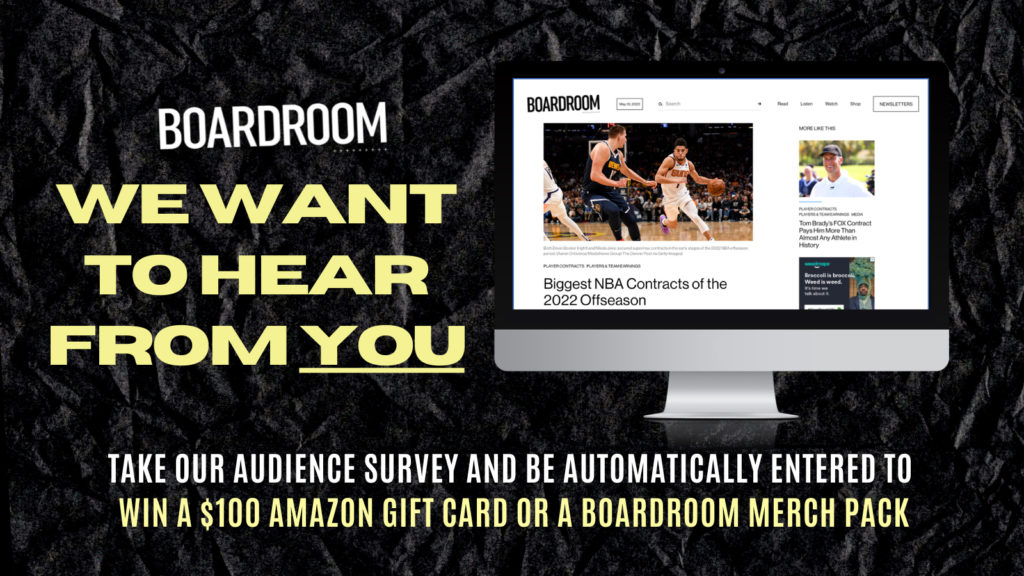
“The Mascotte shirt was his first line,” Mangan continued. “If you were to chart Kanye West’s design evolution, it would go Mascotte by K West to Pastelle.”
Following North West’s attendance at Paris Fashion Week in the famed Pastelle AMA jacket and the recent trademark news, Boardroom goes back to trace the steps of Mascotte’s bear branding and the clothing line that never was.
Not-So-Late Registration
When it came to commerce and clothing, Kanye was on it early.
On June 29, 2004, West and agent Andre Bodiford formed Mascotte Holdings, Inc. Keep in mind this company was constructed mere months after The College Dropout debuted and only weeks after “Jesus Walks” was released for radio.
The timing was both telling and strategic. After registering Mascotte in late June, West would wear a bear-branded polo in the music video for “The New Workout Plan,” the fifth and final single off his first album.
Theoretically, the plan was to capitalize on Ye’s prep aesthetic by bringing out his own apparel line. While West worked tirelessly on his sophomore album all while making beats for the likes of P. Diddy, John Legend, Common, and more, he also produced a range of tees, sweaters, jackets, and polos. Eventually, they were to be put out by Rocawear under his likeness, allowing K West to keep his name hot and his pockets fat during the supposed offseason.
So, from 2004’s The Truth Tour to 2005’s appearance on MTV’s Wild N’ Out, Ye wore sample styles of Mascotte on stage and on screen. Aesthetically, the clothing company was equal parts Polo and LRG, making the most of the cuts, color palettes, and patterns associated with West’s early style.
With Dame’s direction at Rocafella, West had the infrastructure to earn off his influence.
At the time of Mascotte, West worked closely with road manager Don C and barber Ibn Jasper for fashion projects. Thanks to Ibn’s cousin Alpha and J Boogie, who worked on apparel for The Notorious B.I.G. back in the day, the crew was introduced to a young intern named Virgil Abloh.
It was Abloh’s skills in Photoshop that helped take Kanye’s ideas from mental picture to the computer screen when it came time to pitch companies.
Originally, this track was set for more than just tees or track jackets. More importantly, West was looking to make his footprint in footwear years before his Nike or Adidas Yeezy lines ever existed.
The Mascotte Trainer
In the year 2003, Reebok had its sights set on a high school hooper named LeBron James.
The company was willing to break the bank to build on their basketball brand that was gaining traction off the court. Already, it had Allen Iverson signed to a lifetime contract with his Answer and Question sneakers moving major units. In an attempt to form the Avengers, they offered an 18-year-old King James a massive deal said to be worth $110 million.
During the courting process, the brand bought in big on the crossover culture of hoops and hip-hop that Iverson embodied and LeBron lived by. Buying in on Bron’s favorite artist, Reebok signed Jay-Z in April 2003. The two parties promoted each other en route to the infamous “Blackout Game” at Rucker Park while also aligning for the launch of The Black Album.
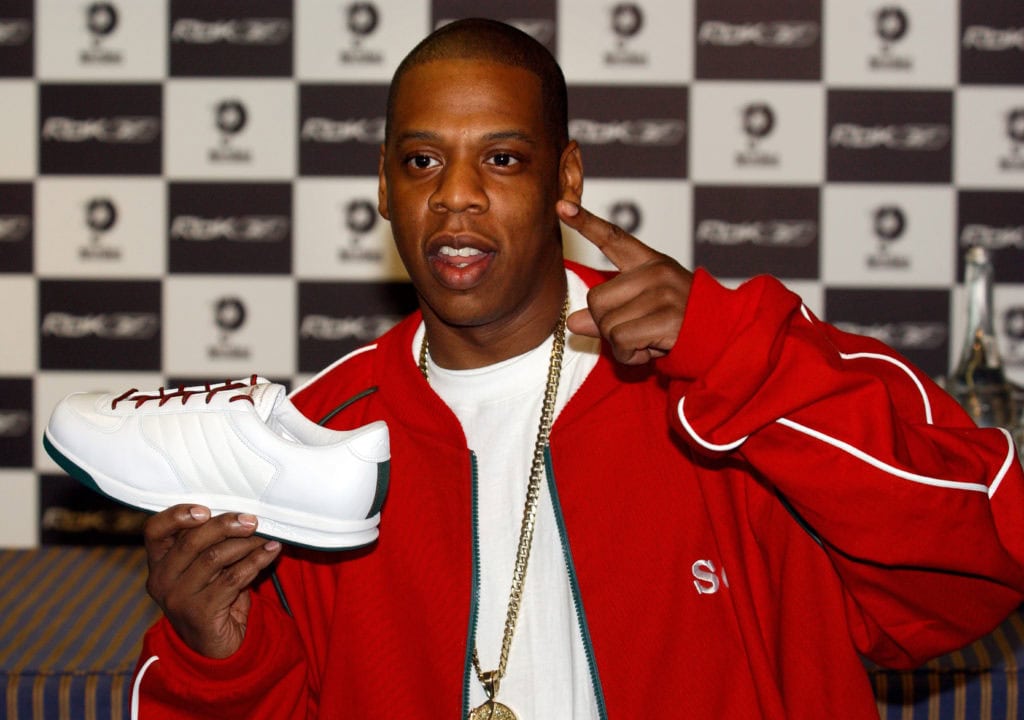
By February 2004, his S. Carter sneaker was selling in stores. So was West’s debut CD. Naturally, there was synergy between Kanye’s camp and the head honchos at Rocafella.
“Jay has the best taste, he gets a Reebok deal and he recreates the Gucci Tennis,” Ibn Jasper recalled to The Complex Sneakers Podcast in 2022. “Then Hov gave Ye the opportunity to do his own version. That’s when we had the Mascotte line.”
With Hov passing the rock to Ye, Kanye quickly created a concept for his own Reebok Mascotte Trainer. Using the same hybrid approach to construction and texture he took to Nike and Adidas, West pulled from retro running and high fashion to sketch a shoe that eventually made it to sample runs in the early ’00s.
“You remember when Ye was the Louis Vuitton Don and just producing?” Jasper continued. “There was a brown Louis sneaker that had like the Puma sole. He took that and the Air Max 90, put it together, and did it for a Reebok. That was going to be his first shoe.”
While the shoe never made it to market with K West branding, his core circle of Chicago comrades mocked up a slew of samples on Adobe Illustrator.
Thanks to fashionable friends, he had the leverage to create concepts at a rapid rate.
“Kanye gave us the assignment: Each one of you gotta do 50 colorways,” Jasper said. “We’re open source, the best idea wins. It was me, Don, and I think Virgil was around, he’d just come over.”
Years later, the Mascotte Trainer did hit shelves but with no nods to Ye or his camp. Infamously, Adidas bought Reebok in 2006. Years later when working on the leisure line for a soccer superstar, the Three Stripes lifted the concept Kanye created and placed it on a ZX sole.
“They took the upper and they gave it to David Beckham,” Ibn noted.
While West didn’t receive royalties for the sneaker, he’s done well for himself at Adidas by building a billion-dollar brand in Yeezy. Still, it speaks to an unrealized retail opportunity that mirrorsYe’s moves in the ’00s that still strike a nerve with fans of his early work.
Sidelining The Dropout Bear
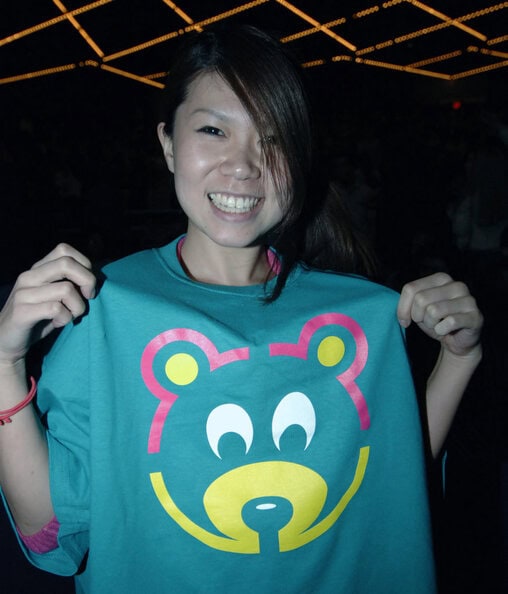
After The College Dropout, aesthetically Ye was ‘off’ the prep appeal that Mascotte was more or less based on. Though Mascotte merchandise appeared to be an integral part of the rollout tied to his sophomore album, Late Registration, Kanye’s sense of style and ambitions had matured.
With the launch of Late Registration, West pivoted into elevated fan merch and set his sights on a bigger brand: Pastelle. In regards to bear-branded tees, Kanye still worked with Sam Hansen and the team that drafted the Dropout logo. However, he began leveraging his growing G.O.O.D. Music roster as a way to elevate his label.
“All of the early merchandise was made at the FTK 559 apparel store outside Fresno,” Kanye collector Randall Audrain told Billboard in 2019. “The owner and Don C were introduced in early 2003 and he proposed ideas to Kanye. FTK stood for For The Kids. They did all the early merchandise until Bravado took over in 2006, who’s a subsidiary of Universal Music Group, and now does merch for just about everybody.”
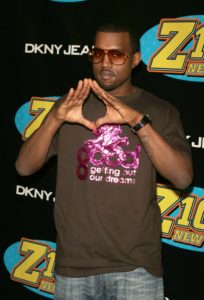
In that era, metallic foil tees bearing the angel imagery associated with West, Legend, Common, and GLC came out at a premium price point and were worn by all artists on the roster, including Kanye.
Prior to the merch boom of the early ’10s — set off in part thanks to Yeezus tour tees — Kanye forecasted the cache that came with artists wearing the same styles of self-branded apparel that fans could actually purchase.
Though the Dropout Bear appeared on album covers and fan merch in some fashion all the way up through Graduation, the idea of dropping a Mascotte line led by Rocawear was beneath what West really wanted to do.
“He said in an interview something along the lines of how he could’ve made millions just selling shit with the bear on it,” Mangan recalled to Jian DeLeon in 2016. “But instead he wanted to go the Pastelle route.”
Mascotte made its mark as a case study for Kanye’s ability to brand apparel as his own. Simply switching Ralph Lauren’s horse emblem for his bear branding wasn’t enough if Kanye really wanted to be taken seriously in the fashion world.
Through the lens of Pastelle — later known as Pastelle Premium and Pastelle Museum — the same team of creatives tasked to take on Mascotte was now working alongside the likes of Kim Jones and Ben Baller. Pastelle was set to be a premium clothing company that occupied the gap between streetwear and high fashion, sold in boutiques as opposed to tables at concerts.
While West wore Pastelle samples and rapped about his brand in songs, it didn’t bare on-the-nose branding like that of Mascotte that was clearly derivative of his album art. The intentions were higher and the price points clearly would be, too. Sadly, just like Mascotte, the most memorable pieces never made it to market.
However, it wouldn’t all be for nothing.
In 2022, there’s an abundance of Kanye clothing coming to market with some of the same ethos expressed at Mascotte and Pastelle. These days, that vision is being executed on a much larger scale.
Kanye’s Future in Fashion
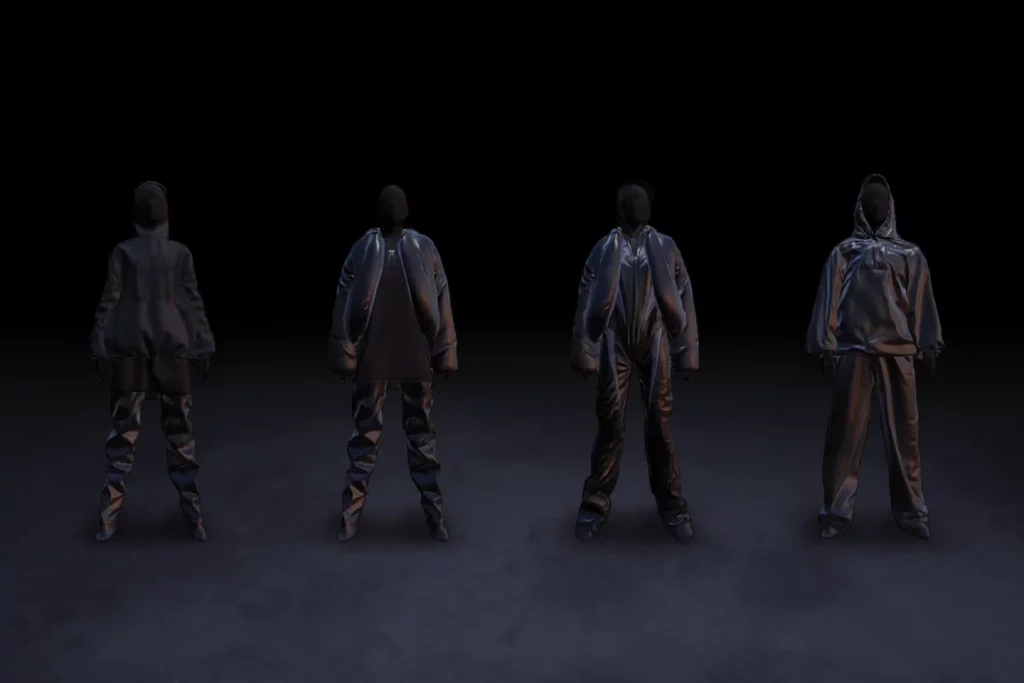
Last month, not only did Ye add another logo to his Mascotte Holdings company, he also launched a massive collection in the form of Yeezy Gap engineered by Balenciaga.
Taking over the first floor of the Gap flagship store in Times Square, West reworked the interior of the space by way of Donda dove video games and massive recyclable bags filled with hoodies and t-shirts designed by his current team of collaborators and Demna Gvasalia.
In its presentation, the setup was the antithesis of a boutique. In concept, it was exactly aligned with the early ethos of both Mascotte and Pastelle.
Draped in almost all black, the latest launch is entirely in line with the album art of Donda, just like the design direction and synergy seen through Mascotte.
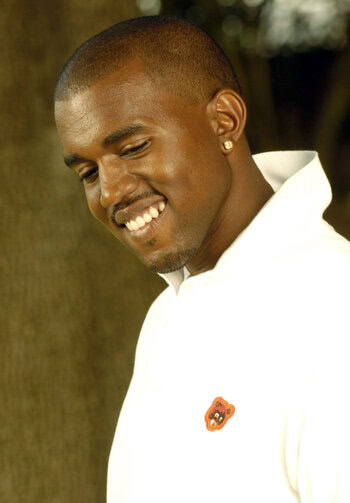
Like Pastelle previously, the merger of Gap and Balenciaga sees Ye looking to occupy the sweet spot between fast fashion and runway ranges.
An article in The New York Times makes it clear that the massive amount of sampling and unprecedented product delays experienced by both of Ye’s previous brands are still the norm at Yeezy Gap.
Regardless, this drop with Balenciaga and his Adidas footwear collection caters to the vision he’s long had and is actually releasing at retail to exorbitant success.
Moving forward, it’s reported that Yeezy Gap by Balenciaga is no longer working on new products but will still serve as the framework for upcoming Ye creations.
With the recent trademark news and a legion of loyalists still infatuated with the art associated with the Old Kanye, could Mascotte make its way to stores?